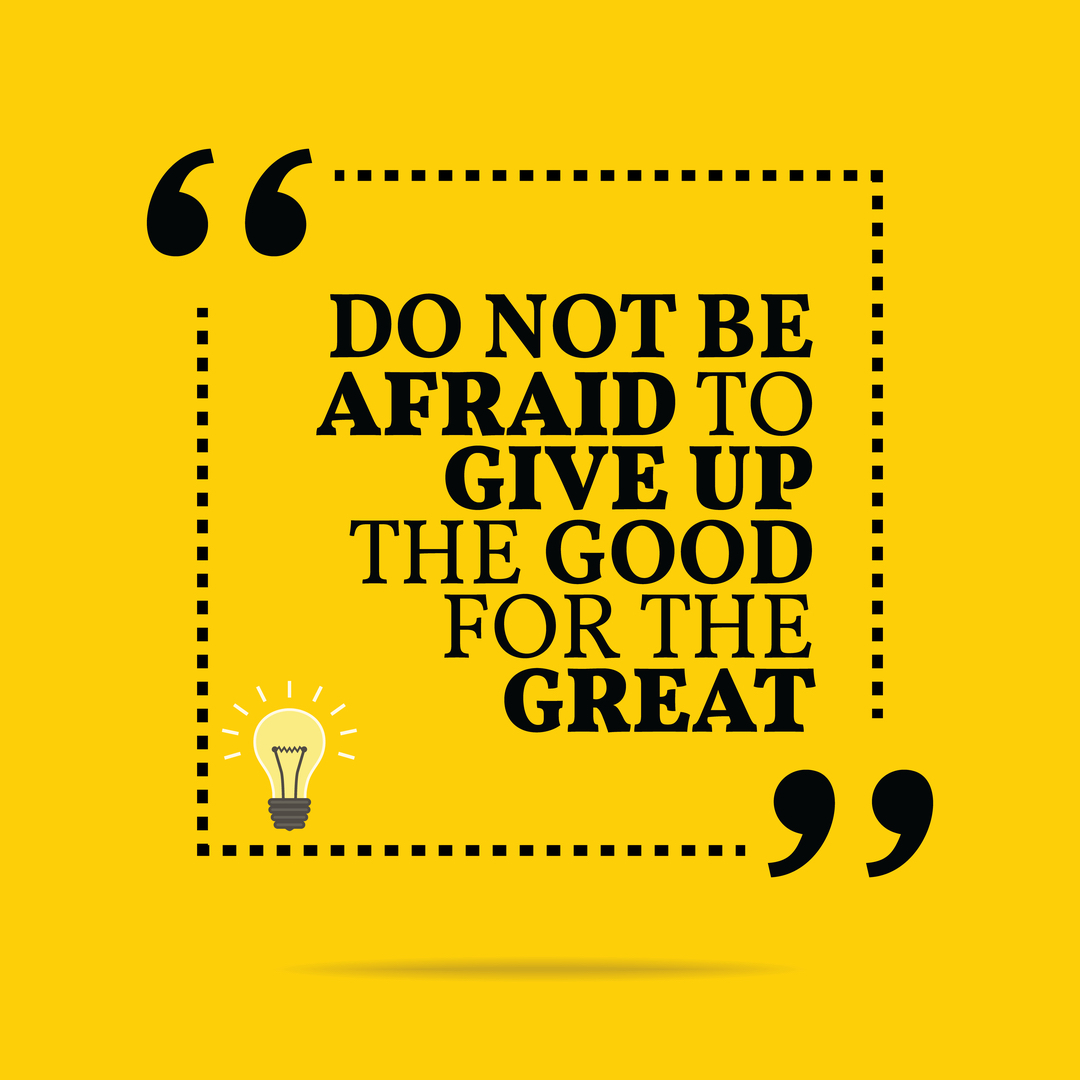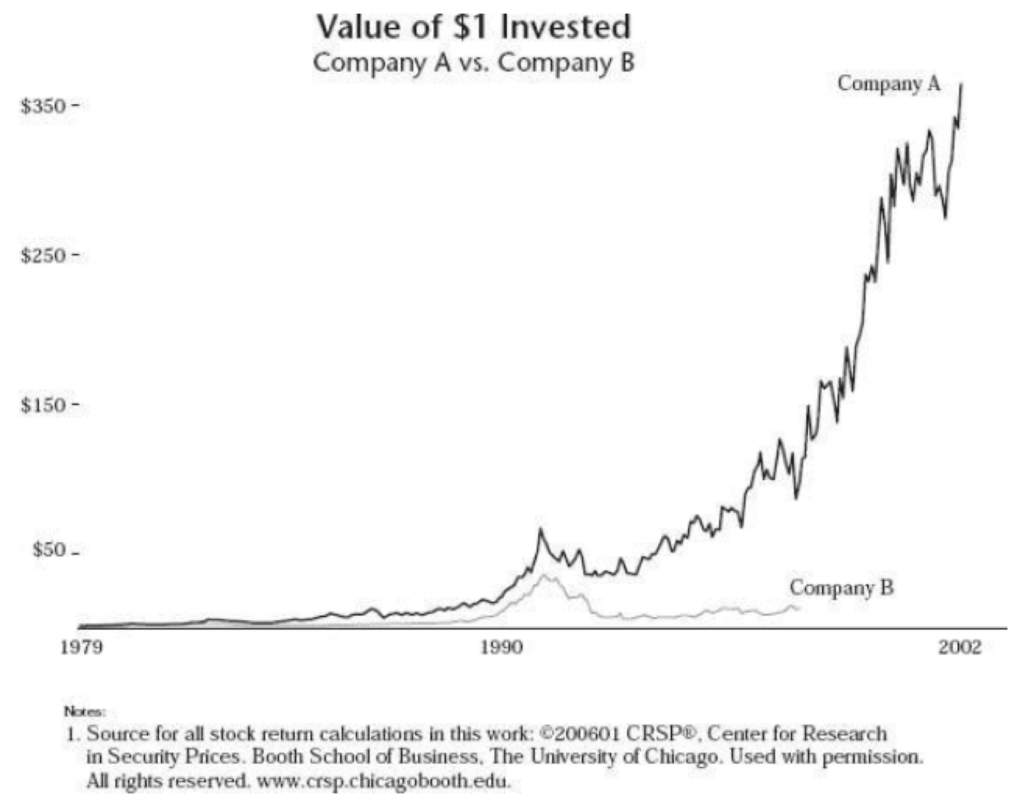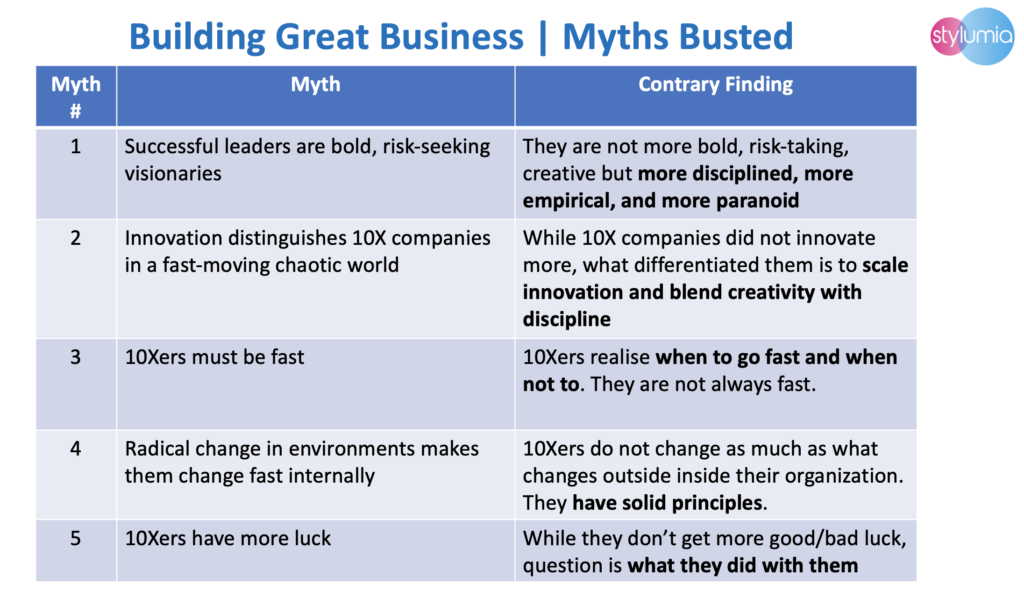Building Great Fashion Business | 2021 And Beyond

Building a great fashion business takes a lot more than building a good one. In this edit, we look at what are the proven ways of building a great fashion business. We took our inspiration from the book “Great By Choice” by Jim Collins.
Taking a long term view and deriving short term decisions out of that helps one stay the course for the long term. Hence any research that helps us understand how some companies stayed long term and became 10Xers will be of great help to any other company.
The key question Jim asks is not “What did the great companies have in common?” but “What did the great companies share in common that distinguished them from their direct comparisons?”
The performance difference is astounding. The figure below depicts the 30x return on a $ 1 investment over time.

Jim’s research busted a lot of myth around what makes great companies.

What can fashion businesses take out of this research? What does it take to build a great fashion business?
How To Build Great Fashion Business
Different behaviours make the difference, not different circumstances. This is the essence of Jim’s research.
What can fashion leaders take from this significant research?
A 10X fashion business leader needs to bring the following behaviours,
- Radical Discipline
- Empirical Creativity and
- Productive Paranoia
Radical Discipline
While the environment may change over time, the 10X leader demonstrates the consistency of action in,
a) Consistency with values
b) Consistency with long-term goals
c) Consistency with performance standards
d) Consistency of method
e) Consistency over time
True discipline needs independence of mind to reject those which are inconsistent with the above. Zappos is a great example of how everything the company does is anchored on customer delight and obsession.
We at Stylumia anchor enabling fashion brands and retailers with the consumer at the center. This is true from consumer research, planning, buying, and allocation optimization. We invented True Demand Science to ensure we remove noise from the data using advanced AI algorithms. Anchoring on consumers never goes wrong. We enable building a great fashion business and help you move from good to great. Our earlier articles provide a deep view of Fashion Noise & Demand Science®
Empirical Creativity
Empirical creativity sounds an oxymoron, especially for the fashion business.
The famous case of Intel CEO Andy Grove is a great example. When diagnosed with cancer, he did not go simply by what the doctor said. He did his own research and took a decision on what he found to have more empirical evidence. Finally what he explored worked. Social psychology research indicates, in times of uncertainty people look up to others for cues. In contrast, 10X leaders look primarily to empirical evidence, not to pundits.
This is very essential for a fashion business to be great. The constant change in consumer and product dynamics makes it difficult for any human to comprehend holistically what is happening and a plan of action with a high probability of the desired outcome.
Here again, we at Stylumia are the support to the fashion leaders in providing empirical evidence from both outside-in and inside-out on what works, what will work and potential forecast of how much, where, and when. With our ability to bring in overall market intelligence, combined with actual consumer demand of the brand/retailer, we enable contextual prediction. The objective is to improve the probability of getting the true demand right, minimize overstock and under-stock, and stay relevant always. Our advanced data processing and augmentation engine not only cleans the data but also augments the data with signals which are additive. Also, our advanced computer vision engine helps break the barrier of reading fashion by attributes which is an inaccurate way to study an artistic product like fashion.
Productive Paranoia
The case of Bill Gates practcing productive paranoia is a great example. He practiced in various spheres like,
a) Who might be the next Bill Gates? (a freaky high school kid working 20 hrs a day?)
b) He wrote a “Nightmare Memo” in 1991 to his team, listing a series of worries and threats
c) He questioned when Steve Balmer wanted to hire 17 engineers, asking if he wanted to go bankrupt
d) He always lived in fear, felt vulnerable
For a great fashion business, the leader needs to practice productive paranoia. It all starts with asking questions about
a) market / competition
b) consumer / environment
c) legal and geopolitical possibilities
The leader has to be hyper vigilant in the good and the bad times.
Look for the black cloud in the silver lining.
Covid is a great example of how many brands and retailers thought about accelerating their digital transformation. While some did not even wait for such an event to occur.
Stylumia is an assistant to triggering answers to questions coming out of productive paranoia. In particular, with respect to consumer, market, and competition. For the environment-conscious, which is a must now, we enable reducing the overall carbon footprint by reducing the wastage due to ill-informed decision making. Here is a news article on how Stylumia is reducing the wastage of millions of garments. This is Day 1.
In Conclusion,
We would like each one of you to build not just a good fashion business but a great fashion business as you embark on this new decade.
While the environment will throw good and bad events at us, it is important how we respond to them.
We are extremely confident, that it is possible but not easy to scale through this space from good to great. This needs a shift in thinking from short to long term coupled with radical discipline, evidence-based decision framework and always being vulnerable.
We at Stylumia exist for an end to end support of enabling your journey of good to great fashion business with advanced proprietary AI/ML capabilities combined with deep domain understanding.



